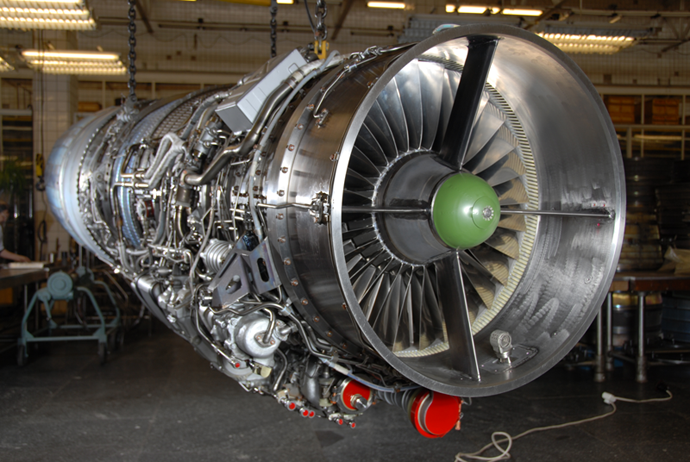SOURCE: AFI


In a significant diplomatic move, India has formally requested Russia to cease the supply of RD-93 engine spares to Pakistan, citing their use in Pakistan Air Force (PAF) JF-17 Thunder fighter jets deployed against India during the recent India-Pakistan conflict, dubbed Operation Sindoor. This conflict, sparked by a terrorist attack in Pahalgam, Jammu & Kashmir on April 22, 2025, has escalated tensions between the two nuclear-armed neighbors, with Pakistan’s JF-17s playing a prominent role in aerial engagements. India’s concerns center on the strategic implications of these Russian-made engines, which power the JF-17 fleet, and the supply chain dynamics involving China as an intermediary, given that the RD-93 was initially intended for China’s Shenyang J-31 stealth fighter program.
The RD-93, a variant of the RD-33 engine developed by Russia’s Klimov plant under the United Engine Corporation (UEC), is a critical component of the JF-17 Thunder, a lightweight, single-engine, multirole fighter jet jointly developed by Pakistan Aeronautical Complex (PAC) and China’s Chengdu Aircraft Corporation (CAC). The JF-17, with a fleet of approximately 156 aircraft as of September 2024, forms the backbone of the PAF, designed for air-to-air and air-to-ground missions. The RD-93 engine, providing a maximum thrust of 8,300 kgf, has been integral to the jet’s performance, with an upgraded RD-93MA variant (offering 9,300 kgf) developed for the JF-17 Block III, enhancing its combat capabilities.
Historically, Russia has supplied RD-93 engines and spares to Pakistan through China, a practice rooted in a 2007 agreement allowing China to re-export 150 RD-93 engines to Pakistan, despite India’s objections. This arrangement was partly due to China’s interest in using RD-93 engines for its Shenyang J-31 (now FC-31) stealth fighter program, though the J-31 later transitioned to indigenous Chinese WS-13 engines. India has repeatedly protested this supply chain, arguing that it bolsters Pakistan’s military capabilities against India, a key Russian defense partner.
The recent conflict, Operation Sindoor, launched by India on May 7, 2025, in response to the Pahalgam attack, saw significant aerial engagements, with Pakistan deploying JF-17s alongside Chinese-supplied J-10CE jets and Turkish drones.
India’s request to Russia to halt RD-93 spares stems from the operational impact of these engines in the conflict. The PAF’s JF-17 fleet, particularly the Block III variant with RD-93MA engines, has demonstrated enhanced electronic warfare capabilities, posing a challenge to India’s air defenses. India argues that continued Russian supplies, even via China, indirectly fuel Pakistan’s aggression, threatening regional stability. This request aligns with India’s historical stance, as evidenced by its 2007 efforts to block RD-93 exports, citing “serious regional security ramifications.”
The RD-93 supply chain has long been a point of contention. While Russia initially resisted direct exports to Pakistan due to Indian pressure, it permitted China to re-export the engines, with China procuring around 1,000 RD-93s worth $6-7 billion. Pakistan has sought to bypass China to procure RD-93 spares directly from Russia, particularly after facing shortages due to Western sanctions on Russia’s Rosoboronexport following the Ukraine conflict. These sanctions, imposed in 2018 and intensified in 2022, restricted Russia’s ability to conduct dollar-based transactions, grounding over half of Pakistan’s 137 JF-17s by August 2022 due to spare shortages.
Pakistan’s direct outreach to Russia for RD-93 spares, bypassing China’s China National Aero-Technology Export & Import Corporation (CATIC), reflects frustration with China’s tepid support and delays in providing spares. Posts on X from 2022 and 2023 highlight Pakistan’s struggles with RD-93 engine reliability, noting issues like cracks in guide vanes, exhaust nozzles, and flame stabilizers, which have led to multiple JF-17 crashes since its induction in 2009. Despite these challenges, Russia’s continued supply of RD-93 engines, facilitated by China, has sustained the PAF’s operational capacity, prompting India’s renewed diplomatic push.
India’s request places Russia in a delicate position, given its deep defense ties with India. Russia remains India’s largest arms supplier, accounting for 36% of India’s arms imports between 2019 and 2023, powering aircraft like the MiG-29 and Su-30MKI with RD-33 and AL-31FP engines, respectively. India’s Hindustan Aeronautics Limited (HAL) also manufactures RD-33 engines for its MiG-29 fleet under a $650 million contract signed in March 2024, highlighting the strategic partnership.
However, Russia’s growing alignment with China and Pakistan complicates matters. Russia’s defense cooperation with Pakistan, including direct RD-93 supplies since 2014, reflects a pragmatic approach to maintain influence in South Asia amid Western sanctions. Posts on X suggest that Russia views these exports as purely business-driven, with one user noting, “There’s no backstabbing just business.” Russia’s rationale, as articulated in 2009, was that the JF-17, a third-generation fighter, poses no significant threat to India’s advanced fleet, which includes “four-plus” generation aircraft.
NOTE: AFI is a proud outsourced content creator partner of IDRW.ORG. All content created by AFI is the sole property of AFI and is protected by copyright. AFI takes copyright infringement seriously and will pursue all legal options available to protect its content.